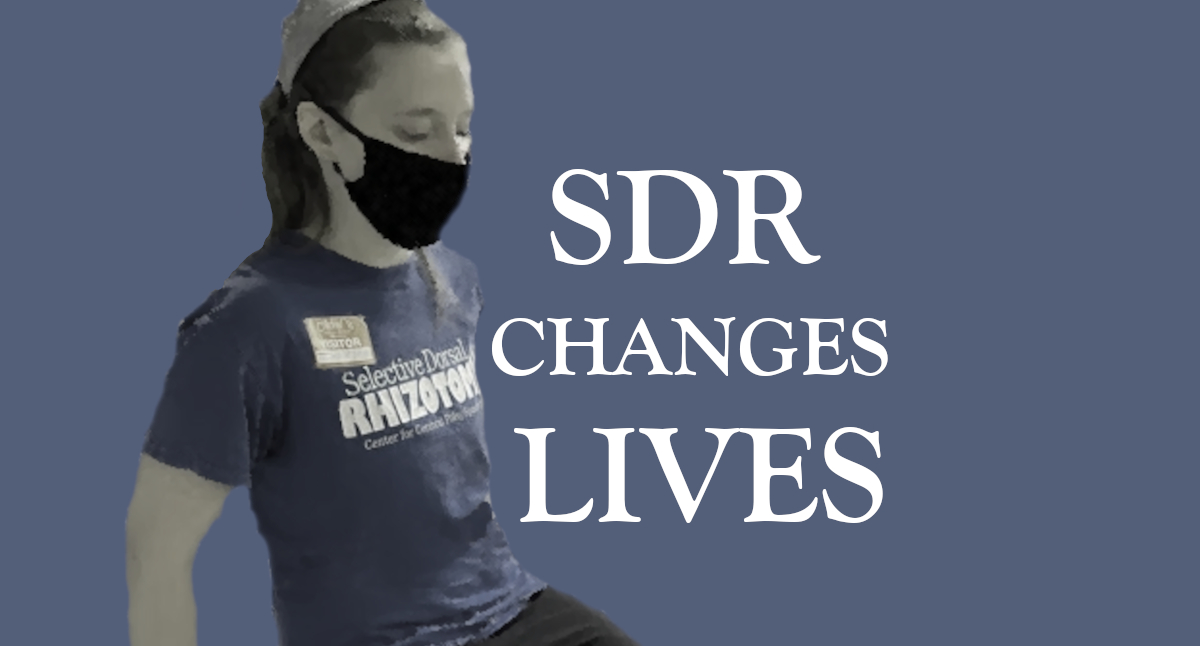how to apply
SDR at St. Louis Children’s:
St. Louis allows in-person evaluations and video evaluations, so patients can choose the option they prefer. If you choose the video evaluation, you will likely get your answer sooner, because there’s often a long waitlist for the in-person consultations.
Either way, the first step is to fill out the patient information form linked in step 1 below.
STEP 1
Complete the patient information form here: https://www.stlouischildrens.org/conditions-treatments/center-for-cerebral-palsy-spasticity/sdr-patient-information-form.
You will then receive an email response, typically within a few business days. If the team believes you may be eligible for SDR, the email will contain instructions for the next steps of the application process.
STEP 2
If you want an in-person evaluation, the office will call you to schedule an appointment.
If you want a video evaluation, the email will contain all of the materials and instructions you need. His team will ask you to mail in:
• forms filled out with your medical history;
• forms filled out by a local physical therapist that describe your abilities to perform specific tasks (don’t worry if you can’t do everything perfectly; if you could, you wouldn’t be considering SDR!)
• a video showing your abilities to perform specific tasks, like walking, sitting, kneeling, kneel-walking, and moving your ankles (you can film this at home on a tablet or smartphone; I did most of it in my living room and asked my therapist to help with the parts I wasn’t sure about);
• hip and spine x-rays; and
• a brain MRI if you were not born prematurely or if there are other unusual circumstances involved in your situation.
Don’t worry too much about finding the perfect physical therapist; ideally, you’ll want to find a good PT who can work with you both before and after SDR, but you can always switch to a new one for your post-op rehab if needed. Some people who have had trouble finding a PT to fill out their forms have been able to complete them independently.
Be sure to get tracking on your package when you send it in so that you can be sure that it has safely arrived!
STEP 3
If you’ve opted for an in-person evaluation and you are accepted as a candidate, you’ll have an opportunity to schedule a date for surgery at that appointment. If you’ve opted for a video evaluation, you’ll typically hear back within several weeks (typically it takes about 6 to 8 weeks).
If you’re a US patient, you’ll receive a phone call from St. Louis (314 area code, so you know what to look out for!). If you’re international, you’ll receive an email.
US patients can typically schedule a surgery date as early as 3 months from their acceptance; international patients typically wait longer (a year or so) because they need to have a 3-week therapy block available after surgery. International patients can be asked to be placed on a waitlist for an earlier date, however!
Application FAQ
Do all SDR surgeons have the same application process?
No. The application process will depend on the SDR surgeon you choose. Some surgeons require in-person consultations. Other surgeons give people the option to submit a video application.
Some surgeons require baclofen trials (this involves injecting baclofen into the spinal fluid, mimicking the action of a baclofen pump) or Botox injections, with the goal of seeing how the muscles function after spasticity has been reduced. Dr. Park (and I believe now his successor, Dr. Roland) did not use either method to judge his patients’ candidacy for SDR, as he didn’t believe that these provide an accurate prediction of a person’s SDR outcome.
Do all SDR surgeons have the same selection criteria?
No; criteria varies widely. Not all surgeons will do SDR on adults, for example, and some SDR surgeons turn down patients who have very mild or very severe CP. Some surgeons do palliative SDR (SDR done for someone with severe CP for comfort reasons only, not to improve mobility).
How long will it take St. Louis to review my application?
In the past it was about 6 to 8 weeks once you submitted everything.
However, the timeline may be different now with Dr. Roland. It also may depend on other factors, including time of year (it tends to take longer around the holidays).
I got a yes from St. Louis! How soon can I have SDR?
If you are in the US, sometimes patients can get on the schedule for as little as 3 months later. You can pick a later date if you prefer though.
If you are international, surgery is often scheduled about a year later. (International patients usually have to wait longer than US patients because international patients must stay for 3 weeks of outpatient therapy after SDR. Also, many international families need to take time to fundraise.) However, you can ask to be put on a cancellation list in case a spot opens up sooner.

